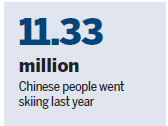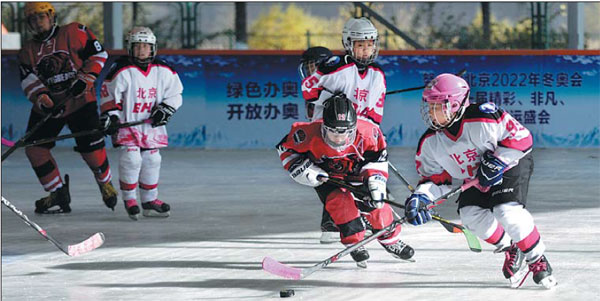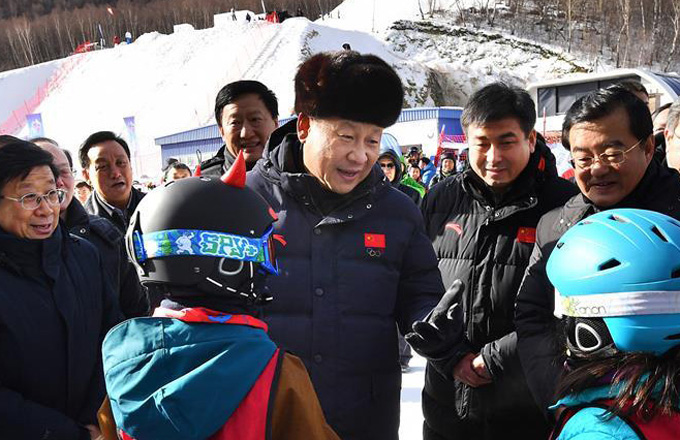Spurring boom in mass sports
Yu Donglin, general manager of Wanlong Ski Resort in Zhangjiakou, Hebei province, has seen his business flourish in the two years since China was awarded the 2022 Olympic and Paralympic Winter Games.
The number of visitors from across the country increased nearly threefold to 220,000 during the 2015-16 winter season. The resort has expanded from 8,800 square meters to 17,000 sq m.
Wanlong is the epitome of the burgeoning ice and snow sports industry.
Interest in the Winter Games is spurring growth in the sector, said Zhang Yan, founder of Magic, a ski training institute in Beijing, which introduced the state-of-the-art training system from the United States to China.

"It could take us five years to complete a development path on which others spent 50 years."
Lin Xianpeng, deputy dean of the Management School at Beijing Sport University, told Xinhua News Agency that China is entering a golden era for developing the sector - and embracing that chance.
There were more than 200 ice rinks and some 500 ski resorts nationwide in 2015. The number of facilities for skating is projected to hit 650, and 800 for skiing, in 2022, according to an infrastructure development plan released by the General Administration of Sport in November.
The central and local governments have rolled out a series of favorable policies to promote the population of ice and snow sports and encourage the growth of related industries.
Bao Mingxiao, an expert on the sports industry, said infrastructure construction, training and mass sports are the priorities in the government's promotional campaign.
Data shows that 11.33 million Chinese people skied in 2016, an increase of 18 percent from a year earlier.
As the participant number still accounts for less than 1 percent of the country's total population, the market has huge potential for growth, industry insiders said.
Giving average people access to skiing is key to the sustainable growth of the sector, Lin said.
Yi Jiandong, director of the sport industry and health management program at Peking University's National School of Development, said the authorities and trade associations need to prioritize the establishment of standardized systems for equipment technical standards and training services.
Currently, the majority of the Chinese participants consider skiing a one-time tourist experience, according to the report.
But Lin noted that skiing need not be considered "just a sport".
"It could be a lifestyle, or an option for a family holiday tour. With this in mind to design and run a ski resort, the ski sector will see a marked improvement in its offerings, as it can be related to hospitality, dining, spas and entertainment."
Yi added: "Sports has close ties with education. Ice and snow sports cannot flourish until they find a niche on campus."
"Only after people are immersed in the ice and snow sports culture can the sector be sustained."
zhuanti@chinadaily.com.cn
|
Children play ice hockey, as part of a winter sports festival in Beijing last year. As China is stepping up preparations for the 2022 Olympic and Paralympic Winter Games, ice and snow sports are becoming increasingly popular nationwide.Provided To China Daily |
(China Daily 07/31/2017 page5)














